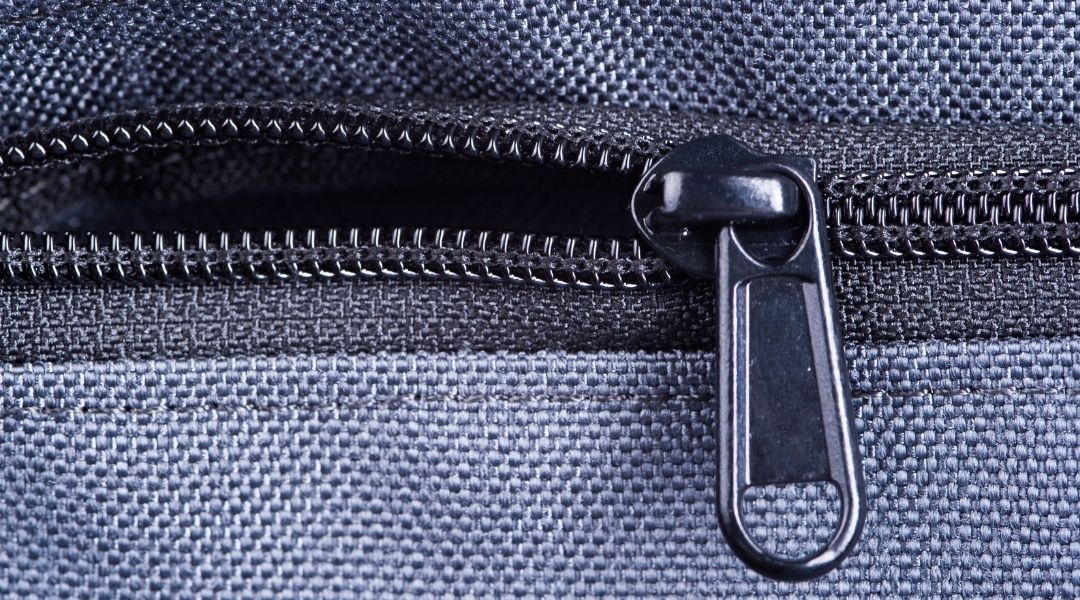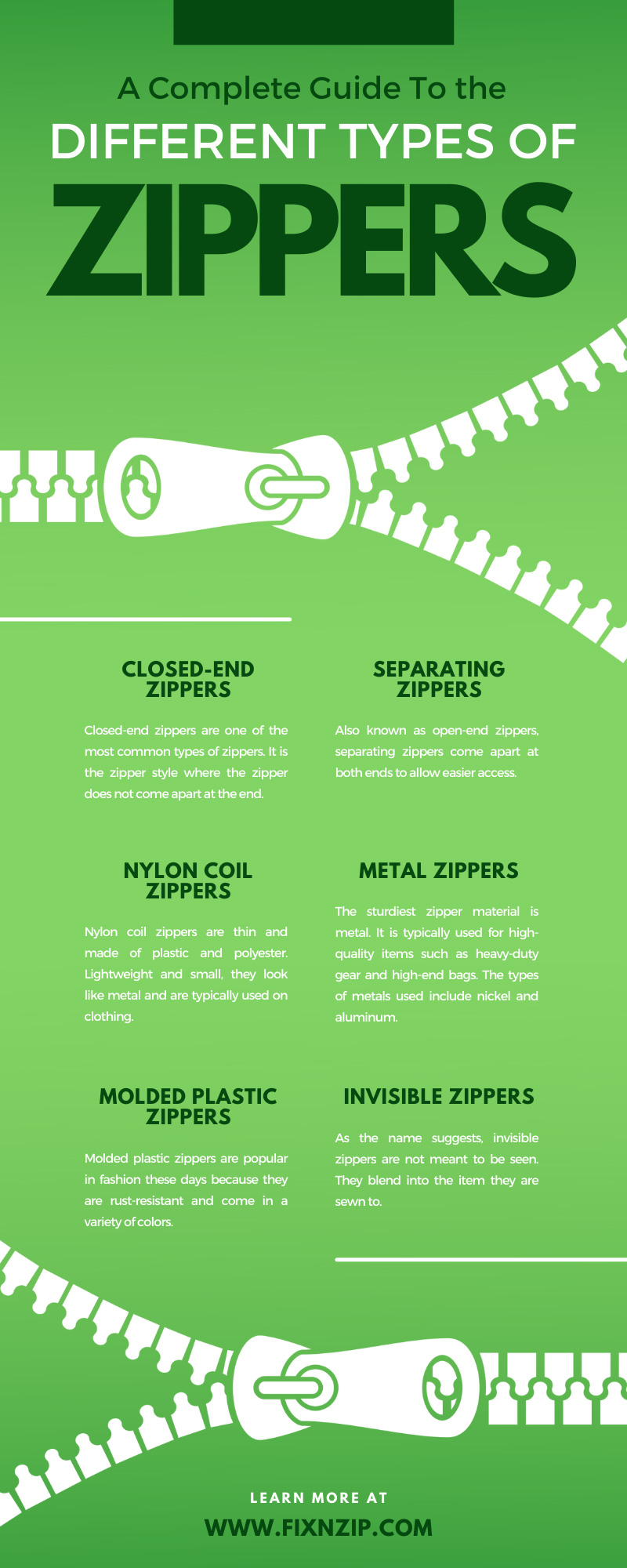
Zippers are a common invention many people take for granted. The history of the modern zipper dates back more than 100 years, but the way we use it has evolved from its early days. Originally, zippers were used as simple shoe fasteners; they are now used for everything from fashion pockets to heavy-duty camping gear. Put simply, their significance cannot be overstated. Discover a complete guide to the different types of zippers to find out which kinds you use most often and which ones you should look for when purchasing items with zippers.
Part of understanding zippers is understanding their components. This seemingly simple mechanism has many different elements that work together. The zipper was engineered, and without one of its features, the fastener won’t work. The parts of a zipper include:
Closed-end zippers are one of the most common types of zippers. It is the zipper style where the zipper does not come apart at the end. Closed-end zippers have a stop at the end to prevent the slider from coming off, so you don’t have to reattach the teeth. It is a common type of zipper used on bags and are extremely easy to fix.
Also known as open-end zippers, separating zippers come apart at both ends to allow easier access. It uses a box and pin mechanism by which teeth are inserted into the slider. Separating zippers are common on jackets and other clothing.
When there are two slides on the same chain, you have a two-way separating zipper. It is common on luggage and tents. Two-way separating zippers allow you to customize the placement of the opening on your item.
When it comes to materials, nylon coil is one of the most common types of zippers. Nylon coil zippers are thin and made of plastic and polyester. Lightweight and small, they look like metal and are typically used on clothing. Nylon coil zippers can be made in closed or open-end styles.
Also known as fly zippers, pant zippers are typically short, nylon coil zippers that look like metal. While they are usually used on the front of pants, they can also be used on purses, pillows, and blouses. Pant zippers contain a stopper to prevent the chain from separating at the end.
Nylon coil zippers for bags are longer and often reach nine to 14 inches in length. Zippers designed for bags don’t lock and easily slide. Further, they do not separate at the bottom.
The sturdiest zipper material is metal. It is typically used for high-quality items such as heavy-duty gear and high-end bags. The types of metals used include nickel and aluminum. Depending on the item you are using, your metal zipper can be closed or open.
Molded plastic zippers are popular in fashion these days because they are rust-resistant and come in a variety of colors. The teeth are molded to fit perfectly together and come in all sorts of sizes. Plastic zippers are lightweight. People use them for bags, jackets, and other fashion designs.
As the name suggests, invisible zippers are not meant to be seen. They blend into the item they are sewn to. Typically, invisible zippers are used on clothing like skirts, dresses, and for side seams. The zipper has a narrow pull and is mostly covered by a strip of fabric.
The exact opposite of invisible zippers are exposed zippers, which are meant to be seen. Zippers which deliberately contrast the item they are sewn to are known as exposed zippers. If you can see the colored plastic of a molded plastic zipper or the shade of metal against jeans, the zipper is exposed. Designers choose to expose zippers for stylistic reasons. Some people like the appearance of zippers.
One of the most important types of zippers is the water-repellent zipper. It is necessary for outdoor gear such as marine and camping equipment. Water-resistant zippers must be rust-resistant to survive tough conditions and last a long time. The zipper includes air-tight seals and is nearly invisible due to how well it is secured.
Though not common, lapped zippers are a way to slightly hide your zipper without making it invisible. Designers use a unique stitching style to partially cover the zipper with fabric. Lapped zippers are used in some clothing applications and on backpacks.
Modern zippers are used for just about everything and in every which way. Once society caught wind of the benefits of zippers, they started to replace buttons as the preferred fastener. Zippers offer more security, but they can still break. Even with an understanding of this complete guide to the different types of zippers, you should keep in mind how to maintain your zippers.
If you do experience a broken zipper, you don’t need to worry. While it used to require a skilled hand at sewing to replace your broken zipper, nowadays, you can use a FixNZip universal zipper repair kit for all your zipper mishaps. This means our products work for every zipper type and size. Simply attach the FixNZip to your zipper chain and use it as a replacement slider. Stop getting rid of your favorite items just because the zipper is busted when there is a better way.

